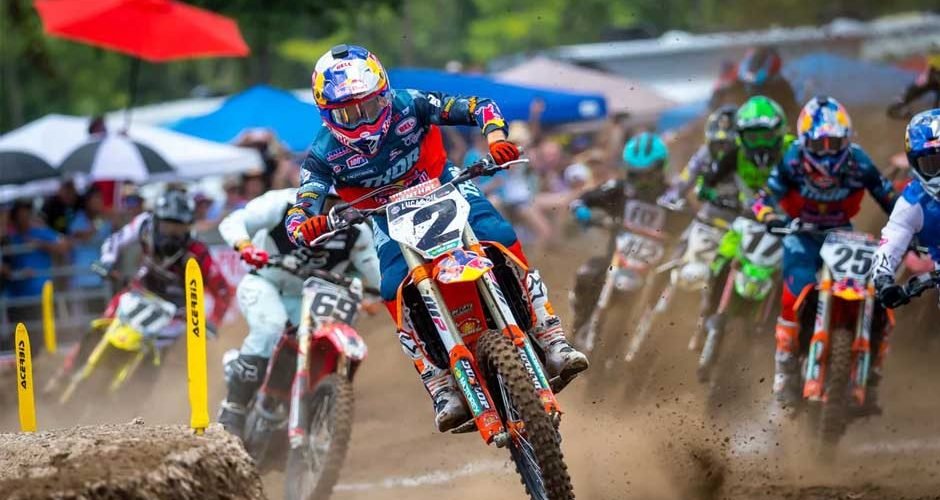Motocross and sport biking are among the most thrilling yet physically demanding sports. Riders push themselves to the limit, navigating rough terrain, high speeds, and unpredictable conditions. However, with the excitement comes a significant level of risk. Accidents in motocross and sport biking can result in severe injuries, ranging from fractures and concussions to life-threatening trauma.
As an emergency medicine physician with a passion for sport biking, Gianluca Cerri MD has seen firsthand the consequences of these high-risk sports. Understanding injury patterns and prevention strategies is crucial for riders who want to enjoy the sport while minimizing the risk of serious harm. By applying principles from emergency medicine and sports science, riders can better protect themselves and extend their time in the sport.
Table of Contents
Common Injuries in Motocross and Sport Biking
While motocross and sport biking differ in terrain and riding styles, they share common injury patterns. Due to the nature of these sports, riders are at risk of both acute injuries from crashes and chronic injuries from repetitive strain.
One of the most frequent injuries in motocross is fractures, particularly to the collarbone, wrist, and ankle. The high-impact nature of jumps and crashes often results in hard landings, causing bones to break under pressure. Riders also commonly suffer from ligament injuries, particularly in the knees, due to the twisting forces experienced when landing unevenly.
Head injuries, including concussions, are another major concern. Even with full-face helmets, riders can experience significant head trauma in high-speed crashes. A concussion, while sometimes dismissed as minor, can have long-term consequences, including memory loss, headaches, and cognitive impairment. More severe traumatic brain injuries (TBIs) can be life-altering or fatal.
Spinal injuries, though less common, are among the most serious. Falls at high speeds or crashes that involve rotational forces can result in damage to the vertebrae and spinal cord. Paralysis, while rare, is a devastating potential outcome for riders who suffer severe spinal trauma.
Overuse injuries are another factor in motocross and sport biking. The physical demands of these sports, including gripping the handlebars tightly, constant vibration, and repetitive impact, can lead to tendonitis, muscle strain, and nerve compression in the hands and arms. The condition known as “arm pump,” where forearm muscles swell and reduce circulation, is a common issue among riders.
Protective Gear: The First Line of Defense
Wearing the right protective gear is one of the simplest yet most effective ways to reduce injury risk. Advances in protective equipment have significantly improved rider safety, but gear is only effective if used properly.
A high-quality helmet is the most critical piece of equipment. Modern motocross and sport biking helmets are designed with advanced materials that absorb impact energy and reduce rotational forces that contribute to brain injuries. Helmet technology has evolved to include multi-directional impact protection systems (MIPS), which help reduce the likelihood of concussions. Riders should always ensure their helmet is properly fitted and replaced after a crash.
Neck braces have become increasingly popular in motocross as they provide additional protection against cervical spine injuries. These braces limit excessive head movement during crashes, reducing the risk of spinal cord damage.
Body armor, including chest protectors, knee braces, and elbow guards, can prevent fractures and soft tissue injuries. Chest protectors are particularly useful in preventing rib fractures and internal injuries caused by impact with the handlebars or other objects.
Gloves and boots play a crucial role in protecting extremities. High-quality riding boots provide ankle support and protection against fractures, while gloves enhance grip and shield hands from abrasions and nerve damage.
Training and Conditioning: Preparing the Body for Impact
Proper physical conditioning is just as important as protective gear when it comes to injury prevention. Riders who are strong, flexible, and conditioned for endurance are better equipped to handle the physical demands of motocross and sport biking.
Strength training, particularly for the core and lower body, is essential. A strong core stabilizes the body during jumps and turns, reducing strain on the lower back and preventing spinal injuries. Leg strength is crucial for absorbing impact upon landing and controlling the bike during tight maneuvers.
Flexibility and mobility exercises help reduce the risk of muscle strains and ligament injuries. Stretching before and after riding sessions can improve range of motion and prevent stiffness. Yoga and dynamic stretching routines have been found to be beneficial for motocross athletes.
Endurance training is another key component. Motocross races and long-distance sport biking require significant cardiovascular endurance. Fatigue can lead to loss of control, slower reaction times, and increased risk of crashes. Riders should incorporate aerobic exercises like cycling, running, or rowing into their training regimens to improve stamina.
Grip strength is often overlooked but plays a vital role in controlling the bike. Weak forearms contribute to “arm pump,” making it harder to maintain a firm grip on the handlebars. Riders can use grip trainers, resistance exercises, and forearm stretches to build endurance and prevent fatigue.
Riding Techniques and Crash Prevention
While crashes are an inevitable part of motocross and sport biking, proper riding techniques can significantly reduce the likelihood of severe injuries. Riders should focus on refining their skills and practicing safe riding habits.
One of the most important techniques in motocross is proper body positioning. Riders should keep their elbows up, knees gripping the bike, and weight slightly forward. This helps maintain control over the bike, particularly in rough terrain and high-speed turns. Standing on the pegs rather than sitting allows for better shock absorption and balance.
Anticipation and reaction time are also crucial. Riders should be constantly scanning the terrain ahead, looking for obstacles, changes in elevation, or potential hazards. Quick reflexes can make the difference between a minor slide-out and a catastrophic crash.
Braking techniques can also prevent injuries. Sudden, aggressive braking can cause the bike to skid or flip. Instead, riders should practice progressive braking, applying pressure gradually to maintain control. Using both the front and rear brakes appropriately ensures smoother deceleration and prevents loss of traction.
For sport bikers, understanding cornering techniques is vital. Leaning into turns with the proper body position and maintaining controlled throttle input prevents the bike from slipping out. Overcorrection and panic braking in corners are common causes of high-speed crashes.
Emergency Medicine Insights for Faster Recovery
Despite all precautions, injuries can still occur. When they do, proper management is essential for a full and speedy recovery.
Immediate first aid is crucial after a crash. If a rider is conscious but in pain, assessing for fractures, dislocations, and head injuries should be the first step. Immobilizing injured limbs and preventing unnecessary movement can prevent further damage.
Head injuries should never be taken lightly. Even if a rider appears fine after a crash, symptoms like dizziness, confusion, nausea, or headache could indicate a concussion. Seeking medical evaluation is always the safest option.
For fractures and ligament injuries, early intervention with ice, compression, and elevation can reduce swelling and pain. However, proper medical assessment is necessary to determine the severity of the injury and the appropriate treatment plan.
Rehabilitation and physical therapy are essential components of recovery. Gianluca Cerri MD emphasizes the importance of following a structured rehab program to regain strength and mobility after an injury. Rushing back to riding too soon increases the risk of re-injury and long-term complications.
Motocross and sport biking will always carry inherent risks, but by applying the principles of emergency medicine and injury prevention, riders can significantly reduce their chances of severe harm. Investing in high-quality protective gear, maintaining peak physical conditioning, refining riding techniques, and understanding proper injury management are all key components of staying safe on the track and the road.
As someone who has seen the consequences of high-speed crashes firsthand, Gianluca Cerri MD stresses the importance of being proactive rather than reactive. Injury prevention isn’t just about protecting yourself in the moment—it’s about ensuring that you can keep riding, enjoying the sport, and pushing your limits for years to come.





